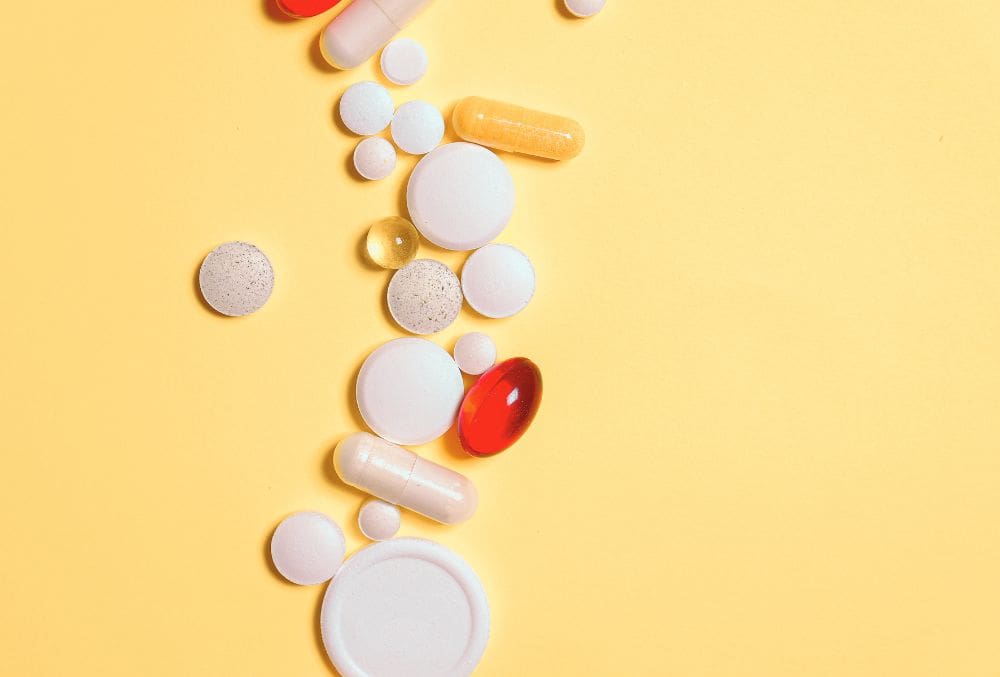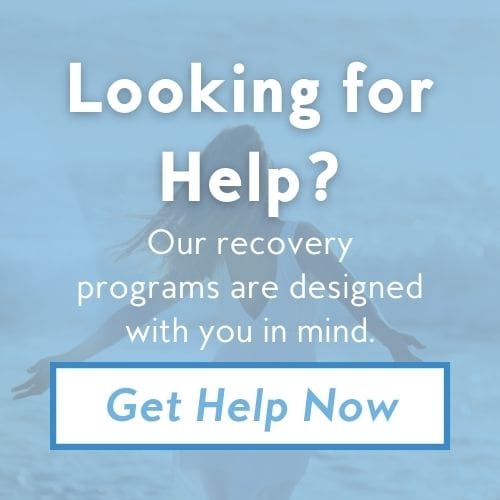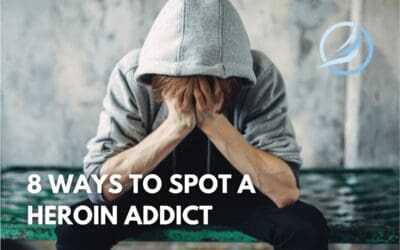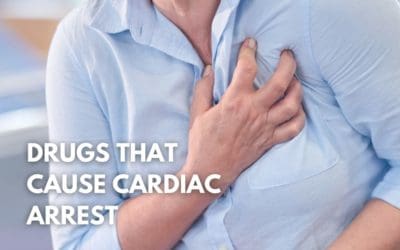Opioids are the leading cause of drug overdose deaths, which itself is the primary cause of premature death in the United States. Although it’s prescription opioid use that has ushered the third wave of the country’s opioid epidemic, this drug trend has led to a significant increase in heroin use.
These powerful pain pills often result in accidental addiction and heroin is a cheap and readily available alternative that many users turn to when those prescribed medications run out. The result has been an epidemic within an epidemic.
Heroin abuse, addiction, and overdoses are overwhelming both and a national and local level. Maryland is also undergoing an acute heroin crisis of its own. In 2019, over 14,000 Americans died from a heroin-related overdose—a figure 7 times higher than it was a decade prior.

What is Heroin?
Heroin is an opioid drug derived from the seeds of the opium poppy plant. It produces a euphoric high as well as pain-relieving effects when consumed. Heroin is one of the most widely abused illicit substances in the United States, and it is also one of the most deadly.
Although this drug is derived from a naturally occurring substance, heroin is typically made in make-shift illicit labs where ingredients, quality, and processes can vary drastically. Another danger: Heroin is often cut or “laced” with other substances to stretch the supply.
These additives can sometimes be harmless, such as flour or powdered milk, but in many cases are toxic chemicals such as laundry detergent, rat poison, or even other drugs such as fentanyl. These unknowns mean that the potency of a heroin dose can vary significantly.
This makes it difficult for users to properly gauge how much heroin they’re ingesting and increases the likelihood of heroin overdose.
Identifying Heroin
When it comes to identifying heroin, is not always as straightforward as it may seem because heroin can be found in several different forms. The forms heroin is found in can range from powders of different colors to a tar-like substance.
White heroin – The most “pure” form of heroin commonly found, white heroin is a powdery or crystalline substance. Still, even white heroin could be mixed with filler compounds such as baking soda, sugar, rat poisoning, etc.
Brown heroin – Also found as a crystal or crushed powder, the darker color of brown heroin is from impurities developed during the production process.
Black tar heroin – Black tar heroin is the cheapest and most impure type of heroin. It is extremely dangerous and is named after its thick texture and dark appearance.
Heroin’s Effects: How Does It Work?
Heroin is a fast-acting central nervous system (CNS) depressant. Whether it’s smoked, drunk, or injected, the drug quickly binds to the mu, kappa, and delta opioid receptors in the body.
This then triggers the release of hormones that create feelings of pain relief, pleasure, and euphoria but can also cause hallucinations, dysphoria, and disassociation. Physiological effects are also felt on the user’s heart rate, breathing, and consciousness.
Physical Effects of Heroin
- Decreased heart rate
- Slowed breathing
- Dry mouth
- Increased body temperature
- Reduced or lack of consciousness
- Nausea & vomiting
- Itchy sensation
Psychological Effects of Heroin
- Clouded judgment
- Impaired decision making
Dangers of Heroin Use
In addition to the effects listed above, there are numerous dangers associated with heroin use. These are things that could ultimately change the whole trajectory of your life, or even end it. The dangers of heroin use include addiction, long-term health issues, overdose, and death.
Heroin Addiction
This substance is incredibly physically and psychologically addictive. Like any other kind of drug, many individuals ultimately end up succumbing to severe addiction. Its mind-altering effects are sought after by users to escape pain and it is common to develop a physical dependence.
Heroin addiction can alter the trajectory of any individual’s life significantly. Heroin addiction makes it difficult to complete day-to-day tasks and responsibilities, including:
- Caring for children
- Going to work
- Maintaining proper hygiene
- Managing finances
- And so much more
The ultimate identifier of whether someone is addicted to heroin will experience a myriad of unpleasant withdrawal symptoms shortly after they stop using. Additionally,
Health Consequences of Heroin Use
While the immediate risks of heroin use are fearful in their own right, the long-term health issues this drug can cause should not be overlooked.
The list of health issues seen in those who do or did use heroin is lengthy:
- insomnia
- collapsed veins
- damaged tissue inside the nose
- infection of the heart lining and valves
- abscesses
- constipation
- stomach cramping
- liver disease
- kidney disease
- pneumonia
- mental disorders (i.e. depression or antisocial personality disorder)
- sexual dysfunction
- irregular menstrual cycles
Heroin Overdose: Signs, Dangers, & Reversals
A heroin overdose happens when more of the substance enters the bloodstream than the body can handle. The body tries to cope but is simply unable to.
Some individuals who overdose will begin to vomit, and if they are on their back they then can aspirate, choke, and die. If a third party observes an overdose and acts quickly and appropriately, then they may be able to save the overdosing individual’s life.
Narcan is a medication that is administered in time and can reverse the effects of a heroin overdose. Unfortunately, even if a heroin user lives through an overdose, they may suffer irreversible brain damage.
Death Rates of Heroin Addiction
For those who overdose on heroin, death is a very real possibility. In 2019, nearly one-third of all opioid overdose deaths were at least partially attributed to heroin use.
Similar to that of other opioids and central nervous system depressants in general, heroin lethality is due to the drug’s effects on the respiratory system. Depressants like heroin can slow or stop breathing altogether, causing a dangerous shortage of oxygen to the brain known as hypoxia.
Brain cells are extremely sensitive to oxygen deprivation and can die within minutes. Heroin is incredibly potent and such a consequence can cause death in mere minutes.
Survivors of overdoses may see this as a wake-up call, that it is time to stop using. For those who are unable or unwilling to stop using heroin, an overdose-related death is not just possible, but inevitable.
Heroin Addiction Treatment
Treating a heroin addiction can take multiple tries and an array of therapy options. The process can be challenging and ugly, but also rewarding and lifesaving.
The best thing to do for yourself or a loved one who is struggling with heroin is to get professional help. Contact an addiction treatment facility that treats heroin use disorders.
Detox
The recovery process starts with detox. During the first few days following cessation of heroin use, withdrawal symptoms may begin to present themselves.
Depending on the frequency, length of use, and amount used, symptoms may be more or less severe. For the most part, heroin withdrawal resembles that of a severe case of the flu: chills, headache, fever, sweating, aching, irritability.
However, it is the severe cravings that many find the most difficult symptom to overcome. Heroin detox programs are designed to manage and minimize heroin withdrawal symptoms.
A medical detox program may offer Subutex or Suboxone, medications that minimize withdrawal symptoms. Some programs also provide alternative therapies such as yoga, acupuncture, massage, and more.
Residential/Inpatient Treatment
Following detox, some patients may stay in an inpatient or residential treatment facility for 30, 60, or 90 days. These programs provide the benefit of 24/7 supervision and care, a safe, temptation-free residence, nutritious meals, entertainment, and more. However, residential treatment is not always accessible or feasible for recovering addicts and it is not a permanent arrangement.
Partial Hospitalization Program (PHP)
PHP is a treatment option that provides a high level of care including full-time programming and typically helps clients get placed in a sober living environment while completing the program. PHP can be a great alternative to or next step after inpatient treatment.
Outpatient Treatment
For those who have completed higher levels of care, intensive outpatient programs (IOP) and standard outpatient treatment (OT) can provide long-term care at fewer hours per week. IOP and OT provide flexibility for clients to be able to work, go to school, and otherwise return to daily activities while still making time to work on their recovery.
Don’t Let Heroin Steal Your Life, Get Help Today
The devastating effects of heroin extend far beyond addiction. It can lead to serious health problems, financial ruin, and even death. If you or someone you love is struggling with heroin, there is help available.
Our addiction treatment programs are designed to address the physical and psychological aspects of addiction, providing the tools and support needed for lasting recovery. With professional guidance, you can break free from heroin’s grip and reclaim your life. Don’t wait any longer. Contact us today and take the first step towards a healthier future.
Sources:

































